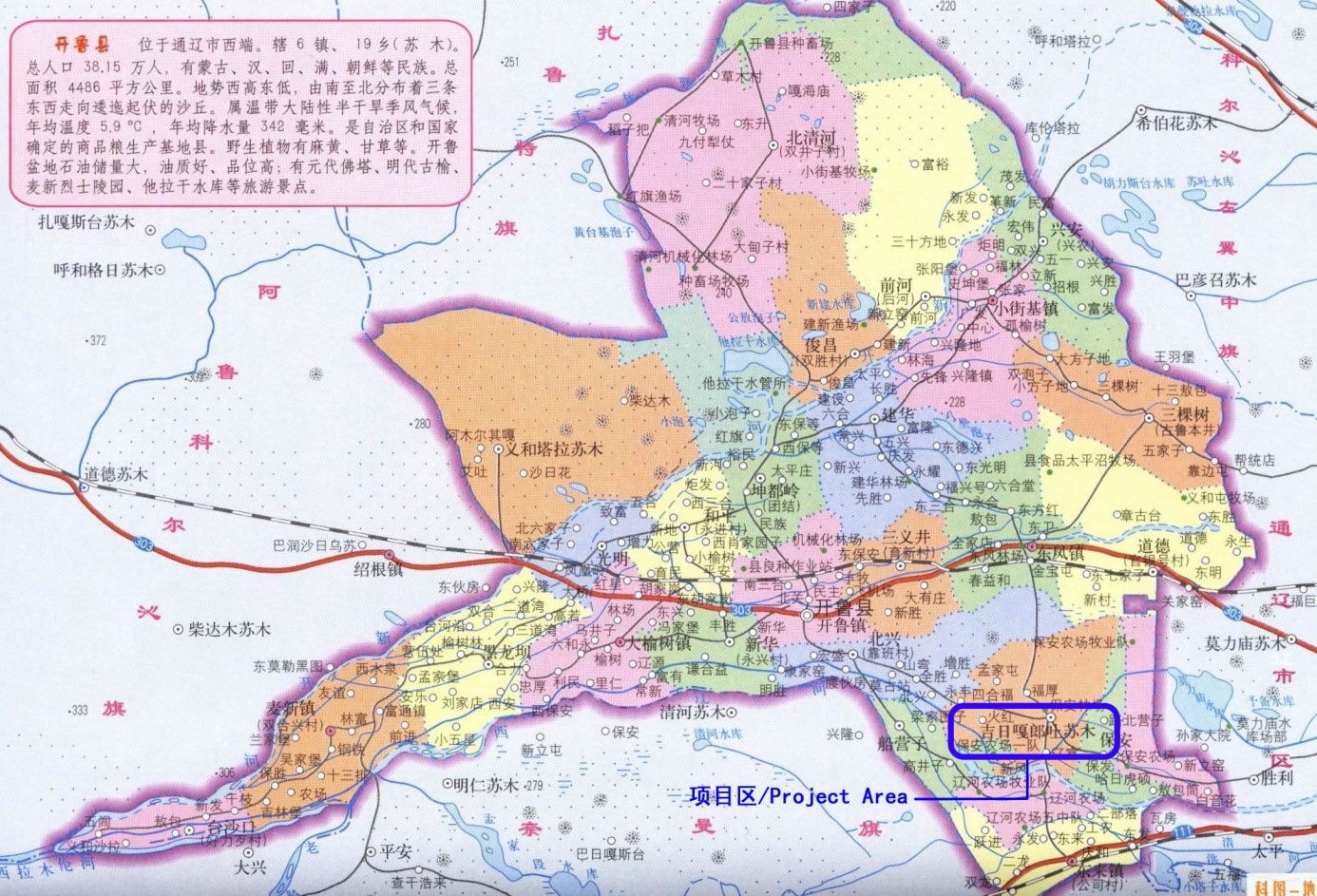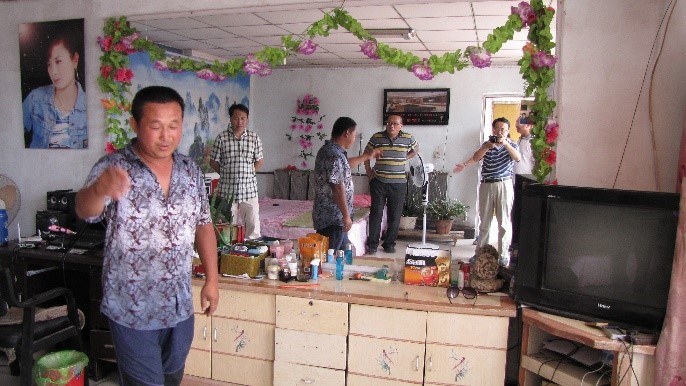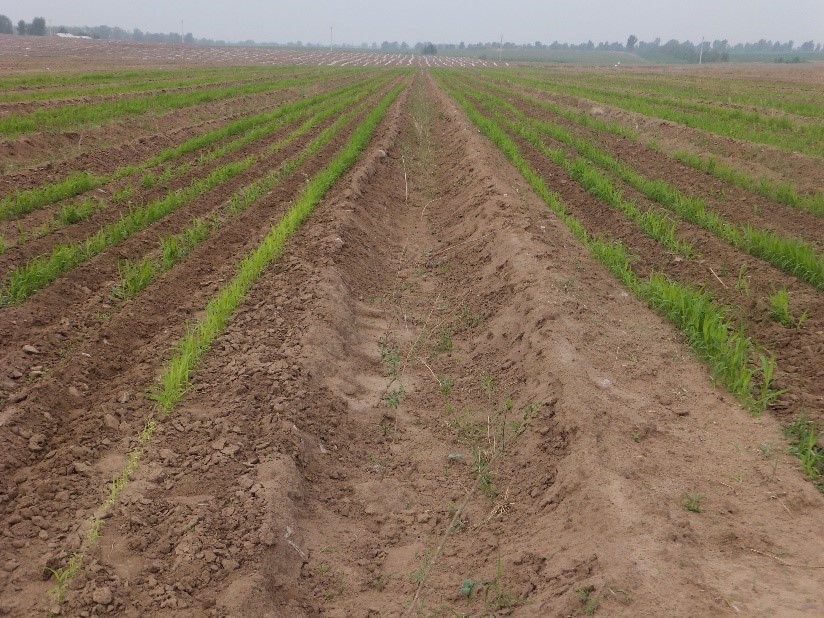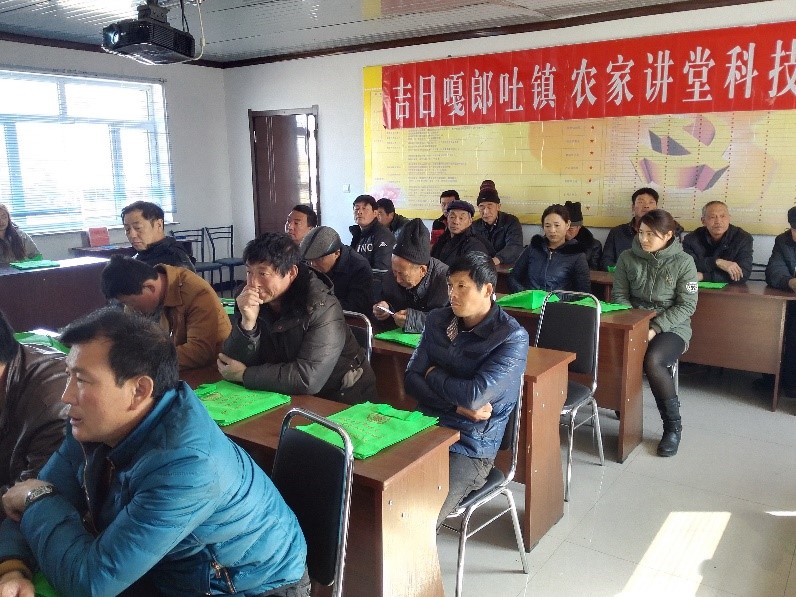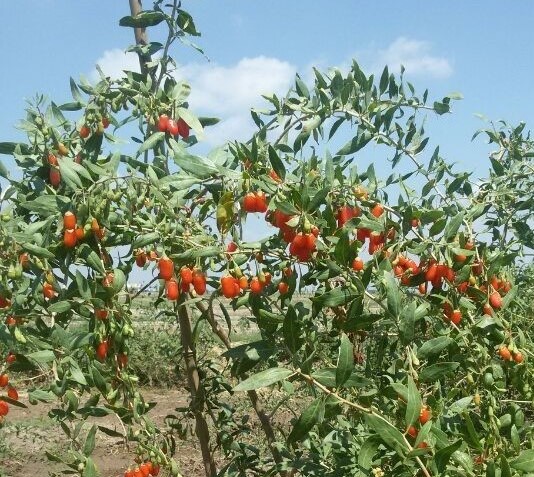Desertification Control and Rural Sustainable Development in Kailu County, Inner Mongolia
Project Background
Tongliao City is located in the eastern part of Inner Mongolia Autonomous Region (IMAR). It is bordered with Jilin Province in the east, Liaoning Province in the south, Chifeng City and Xinlinguole City of IMAR in the west, and Xing’an City in the North. Total land area in Tongliao City is 59,535 square kilometres, with a length of 418 kilometres from the south to the north and 370 kilometres from the east to the west. By the end of 2012, total population in Tongliao City was 3.2 million, ranking the second amongst all cities in IMAR. Of all the population, 1.52 million people are Mongolians, accounting for 47.5 percent of the City’s total population, or 25 percent of all Mongolian people in China. In 2011, total GDP in Tongliao City was 144.9 billion yuan, and local fiscal income was 12.1 billion yuan. Per capita disposable income in urban area was 16,548 yaun and farmer’s net income was 7,216 yuan. Tongliao City is situated in the centre of Ke’erqin Desert. Total desert area in Tongliao City is 41 million mu or 2.7 million hectares, which is 45.4 percent of total land area in Tongliao City or 52.7 percent of total desert area in Ke’erqin Desert. Among all the desert in Tongliao City, flowing desert area is 3 million mu or 200,000 hectares;
semi-flowing desert area is 32 million mu or 2.1 million hectares; potential desertification area is 5.8 million mu or 390,ooo hectares. Total grassland area is 51.3 million mu or 3.4 million hectares. Of which, 82 percent or 42.2 million mu or 2.8 million hectares is in degradation and desertification. Total forest area is 21 million mu or 1.4 million hectares. Forest covering ratio is 23.7 percent.
in the project area
The proposed project area is located in Baohe Administrative Village. It is a village of Jirigalangtu Township, Kailu County of Tongliao City. This village include two natural villages, namely Baohe Village and Jianfa Village. Total land area of Baohe Administrative Village is 22,000 mu or 1,467 hectares. Today, there are a total of 484 families or 2100 residents in this village. Major economic industries include grain production, cattle raising and tertiary industry. In 2012, per capita net income in this village was 4,500 yuan. Of which, 58 percent was from grain production, 19 percent was from cattle raising and 23 percent was from tertiary industry. Among all the 484 families, 167 families (668 people) or 34.5 percent of the total families live under the National Poverty Line. Poverty incidence ratio is 31.8 percent. Per capita net income of these poor families was 2,200 yuan. The location of the project area can be seen from the following map.
Problem Description
Kindly describe and analyse the situation / problem intended to be addressed by the project. Describe in particular how men and women are affected in general and/or in different ways (gender analysis). Kindly provide an attachment for baseline data if available.
Dersertification is the major threat to the project area. Because this village is situated in the center of the Ke’erqin Desert, an area which faces the most serious desertification, and there was no practical technologies which can be introduced into this area before 2012, local economy has long been stayed at a stable traditional stage: desertfication keeps grain output and yield in a low and unstable level, which lead to a subsistance life for local small-scale farmers; With no surplus grain for commercial businesses, people find no way to increase their income; Poor life forces young people, especially young men, to leave their land and move to cities; Even though the government increases its fiscal expendicture on agricutural production and rural community, the remaining less-educated elder people dilute the efficiency of government’s efforts. Less change and development happen in rural society.
Target Groups
Our target people include following three groups:
The poor people, namely all the 668 people in the 167 poor families. From the above baseline data, we can conclude that these people have a low ratio of young labours, higher ratio of Mongolians, and low ratio of people who received higher education. They have a low social, economic and cultural status, with no organized structure and are marginalized people in local decision making process.
The women, particularly the women in the poor families. Our survey shows that in all the 2,100 villagers, the ratio of men to women is 1:1.08; in all the 668 poor villagers, the ratio is 1:1.1. If taking the out-flowing people into account, this ratio is 1:1.3 and 1:1.8, respectively. These data tell us that women are the major part of the population in this area. According to Chinese customs, women play less important roles than men in both family decision making and community decision making. In this village, more than 70 percent of women received junior education and only 30 percent received senior and higher education, compared with the inverse ratio for men. However, these women take over 65 percent of rural work and 80 percent of family work. Without the participation of women in the implementation, monitoring and evaluation of the project, local economy will not achieve development.
The minority people, as they make 35 percent of the total 2,100 people in the whole village and 35.18 percent of the total 668 poor people. They speak their own languages and keep their own cultures and customs. Yet they need to join the society and the mainstream of development and share the achievements of development.
Expected Outcome and Impact
This project aims at achieve ecological and environmental, economic and societal sustainable development in the project area through integrated rural development path with the focus on the poor, women and minority people.
Kindly specify the project objective to be accomplished within the project period (outcome level).
Because there is rich deposit of underground water underneath the desert, the irrigated Chinese wolfberry industry will be introduced into the project area for two purposes: (i) to rehabilitate vegetation in the desert area to control desertification, as Chinese wolfberry is a perfect shrub adapting to desert, and (ii) Chinese wolfberry is a very popular herb which is nationally welcomed in China. The Chinese wolfberry will be interplanted with forages, which will be used as feed for cattle. In this way, people in the project area will engage in at least two commercial industries, i.e. the fruit of Chinese wolfberry and cattle, contrasted with no commercial industries without the project. At the same time, to promote social changes in the project area including gender equality, self-respect and self-confidence, decentralized decision making, equal participation in PME activities, etc. According to this path, the objective of the project can be achieved.
Which measures do you intend to apply to ensure the sustainability of the above stated intended outcome?
Promote and facilitate a decentralized decision making process in the local community.
Building capacities for the people in the project area, especially the poor, women and minority people.
Building technical, institutional and organizational capacities for local community, particularly for farmer cooperatives.
Activities
Desert control. As mentioned above, desertification is the major threat in the project area. In order for the local people to reduce poverty and realize sustainable development of local economy and society, the first step will be to control the spreading desertification. According to our survey, there are a total of 5,000 mu or 333.3 hectares of desert that needs to be control. The way of controlling the desert is to plant the Chinese wolfberry from Ningxia Hui Autonomous Region. There are two reasons for this: the first is that Chinese wolfberry is a perfect shrub that adapts to desert and can play a role in controlling the spreading desertification. The second is that the fruit of Chinese wolfberry is considered as a herb, and as a result, it has an increasing demand on markets. The price of the fruit of Chinese wolfberry has been doubled in the past three years.
NHAR is a region neighbouring the western part of IMAR. People in HHAR have a long history of growing, processing and marketing of the fruit of Chinese wolfberry. With the growing market, they are trying to find new production base for this product, and Tongliao City owns a similar climate and soil with NHAR. People in Tongliao have introduced and demonstrated the planting of Chinese wolfberry from NHAR and practice proves that the Chinese wolfberry grows quite well in Tongliao City. Therefore the wolfberry will bring income for local people. In addition, forages will be interplanted with the Chinese wolfberry and these forages (mainly alfalfa) will be used as feed for the growing cattle or beef industry. All the 5,000 mu of desert will be controlled by the end of this project. Activities in this component include levelling land, purchasing seed of the wolfberry, introducing high-voltage lines, digging wells and installing transformers.
Livestock industry. Tongliao City is the single largest region in beef industry in Northern China and Kailu County, where the project area is located, owns the largest open feeder cattle transaction market. Each year, there are around 1 million feeder cattle sold in this market. Consequently, raising cattle is a profitable industry locally. In our design for this component, it is planned to buy cows for the poverty-stricken families. A total of 180 cows will be purchased in three years. In order to raise these cows, a total of 36 cattle pens will be built for those who own the cows.
Training. Training plays very important roles in rural development practices. According to our definition of the target groups, trainings will be mainly for three groups in the village: (i) the poor people; (ii) women, and (iii) minority or ethnic people. Contents of training will include such areas as: (i) awareness of reducing poverty; (ii) future rural development trends; (iii) the importance of environment in people’s life and the ways of protecting environment; (iv) how to develop rural economy based on local endowments of both natural and socioeconomic resources; (v) the important roles of women in rural development practices; (vi) planting techniques and field management of Chinese wolfberry and forages; (vii) cattle feeding and disease control, and (viii) home economics, especially for women, and so forth.
